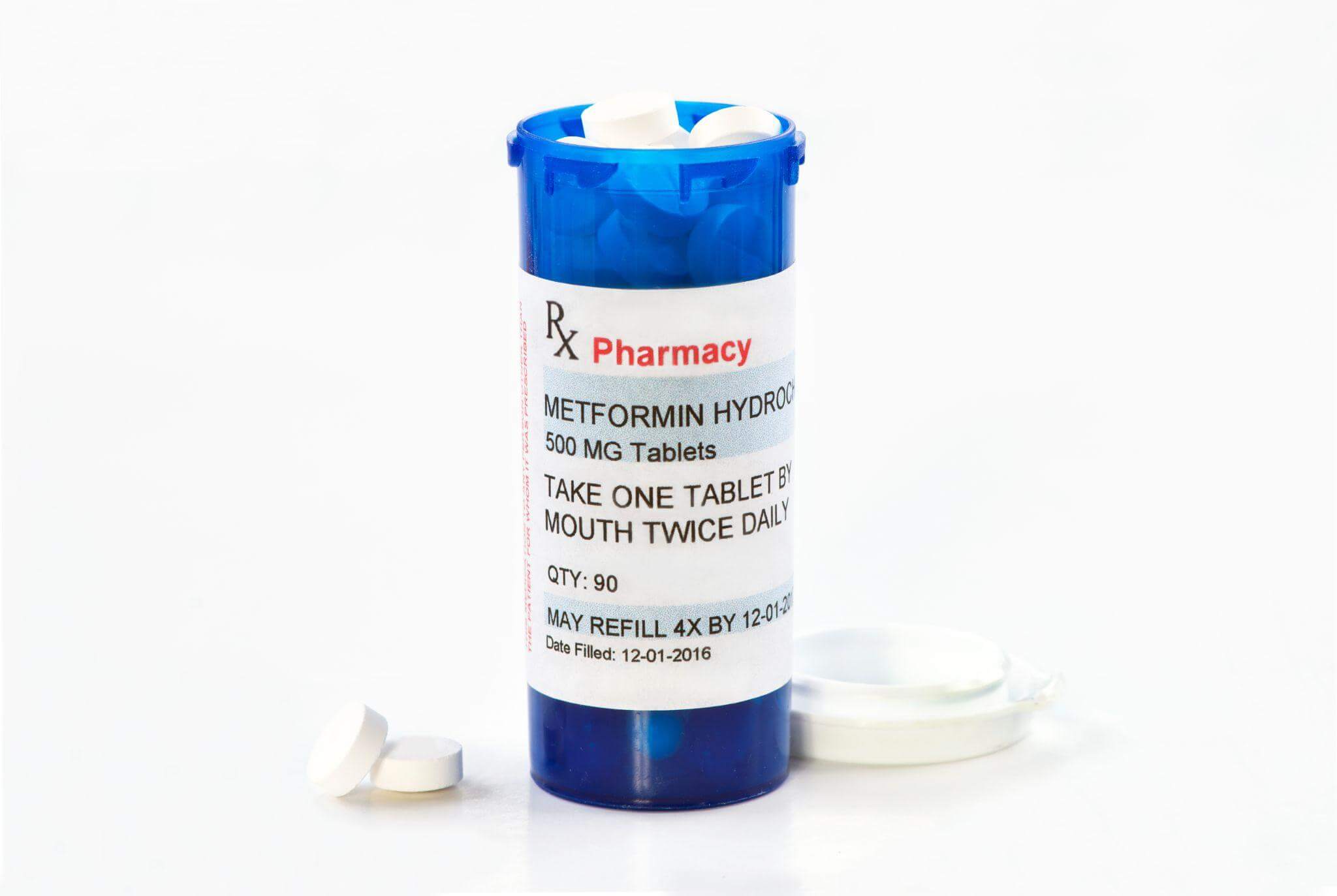Highlights
- Metformin has its roots in folk medicine and has been on the market for decades as a way to reduce blood sugar.
- Metformin is generally well tolerated, although people with liver and kidney problems should review their situation with their doctor before taking it.
- People taking metformin should take certain dietary precautions.
- A metformin overdose can cause lactic acidosis, a potentially fatal medical condition.
- Getting the lowest price on metformin can help you focus on treating your diabetes, not budgeting for medication.
Over a third of the American population has some form of diabetes, and metformin is often the first line of defense. While metformin is a powerful tool for managing diabetes, it’s important to know its possible side effects and how it’s generally used. Learn what metformin is, how it works, and what you should know before taking it.
What Is Metformin and What Is It Used For?
Metformin is derived from French lilac, which has been used as a folk remedy for diabetes for several centuries. Researchers isolated the active compound and found that it lowered blood sugar, rapidly making metformin one of the first drugs doctors turn to for diabetes management.
Metformin is also currently being studied as a treatment for polycystic ovarian syndrome (PCOS.) However, it is currently prescribed off-label for this use, as it hasn’t been approved by the FDA for this purpose.
Metformin can also be used to reduce the risk of weight gain caused by other medications.
How Does Metformin Work?
Metformin is part of the biguanide class of medications and the only medication of this class currently on the market. While early on, it was believed that metformin worked solely by acting on the liver, further research has found that it has multiple mechanisms of actions that are still being studied.
These include:
- Reducing glucose production in the liver. It is clear that metformin acts on the liver and is being considered as a treatment for other liver diseases. It’s been found to act on glucose production in the liver, although how it does so remains the subject of research.
- Increasing glucose uptake in the intestines. Metformin appears to encourage cells in the intestines to make immediate use of glucose, limiting how much gets into the blood.
- Changing the gut microbiome. Still in its earliest stages, metformin extends the lifespan of at least one common microorganism in the gut, which may impact insulin or glucose as well.
Metformin may have other impacts as well, such as lowering testosterone levels in the blood.
Metformin Dosage and Administration

Metformin is typically taken orally and can be taken with a meal. It is also available in extended-release tablets that should not be crushed, chewed, or broken. Metformin can be taken twice a day, although that can be expanded to three times a day depending on your needs. Some forms are taken only once daily with the evening meal. Dosage may be adjusted by a healthcare provider as needed.
Tablets usually begin at 500 milligrams per dose and may go as high as 2500 milligrams once you’re used to the drug. Oral solutions start at 5 milliliters a day and can range up to 20 milliliters.
What Formulas Are Available for Metformin?
In addition to simple formulations of the drug itself, metformin is often combined with other diabetes medications in a number of formulas, most commonly:
- Pioglitazone, a drug in the thiazolidinedione class that works by increasing the body’s sensitivity to insulin. Metformin-pioglitazone is sold under several brand names, including ActoPlus Met.
- Dipeptidyl peptidase-4 (DPP-4) inhibitors, particularly alogliptin. Alogliptin works by increasing the body’s production of incretins, hormones that help the body use insulin more effectively. Common brand names for metformin-alogliptin include Jentadueto, Kazano, and Xigduo.
- Sodium-glucose cotransporter-2 (SGLT-2) inhibitors (canagliflozin, dapagliflozin, ertugliflozin, and empagliflozin): These drugs work by blocking the reabsorption of glucose in the kidneys. These combination medications are available under several brand names, including Synjardy and Steglatro.
- Sulfonylureas such as glipizide and glyburide
- Meglitinides
Many of these either act similarly to metformin using a different pathway or stimulate the production of insulin. These are sometimes available in triple combinations as well. However, they should not be combined unless explicitly prescribed. If you have a potential allergy to one or more of these medications, check with your pharmacist on the exact formulation before taking it.
Metformin can generally be used with insulin. However, type I diabetics may be at higher risk of hypoglycemia when combining metformin and insulin.
What Are the Potential Side Effects of Metformin?

Metformin is seen as generally well tolerated, meaning there are few extreme side effects and they’re rare. The most commonly reported side effects are:
- Diarrhea and cramping
- Nausea and vomiting
- Flatulence
- Other gastrointestinal discomfort
These side effects usually are most intense when you start using metformin and decrease over time. If that doesn’t happen, talk to your doctor. Meformin may raise the risk of hypoglycemia (low blood sugar) in some patients.
Over the long term, metformin patients may have elevated homocysteine levels. High levels of homocysteine may contribute to difficulties with heart disease, particularly atherosclerosis, and elevated levels have been associated with higher risk of blood clots, stroke, and heart attack, although whether this correlation means it can be a cause of these problems is unclear. If you have heart disease or a family history of heart problems, get cleared by your doctor before taking metformin.
Those taking metformin can also have trouble absorbing vitamin B12. Vitamin B12 deficiency can reduce the number of healthy red blood cells in the body. This is normally addressed with supplements or vitamin injections. Be aware of the possible signs of B12 deficiency if you’re going to take metformin over a long time horizon, and supplement options.
In rare cases, lactic acidosis is a possibility, usually in patients with some form of liver or kidney disease. See What Should I Do If I Overdose on Metformin? below.
What Should I Avoid When Taking Metformin?
There are several things you should avoid when taking metformin. These include:
Alcohol: Drinking alcohol while taking metformin can increase your risk of developing lactic acidosis.
Grapefruit: Grapefruit juice can interact with metformin and increase your risk of side effects.
Certain medications: Metformin can interact with certain medications, such as oral contraceptives, anticonvulsants, and antibiotics. If you are taking any other medications, talk to your doctor about whether they are safe to take with metformin.
Too much sugar: Metformin helps to lower blood sugar levels, so it is important to avoid eating too much sugar. This includes foods that are high in sugar, such as candy, soda, and desserts.
Too much saturated fat: Saturated fat can raise blood cholesterol levels, which can increase your risk of heart disease.
Too much sodium: Too much sodium can raise blood pressure, which can increase your risk of heart disease.
What Should I Do If I Miss a Dose of Metformin?
If you miss a dose of metformin, take it as soon as you remember. However, if it’s almost time for your next dose, skip the missed dose and go back to your regular dosing schedule. Do not double doses.
It’s important to take metformin as prescribed by your doctor. Missing doses can increase your risk of high blood sugar levels, which can lead to serious health problems.
What Should I Do If I Overdose on Metformin?
If you overdose on metformin, seek medical attention immediately. Overdose can cause lactic acidosis, which can be fatal.
Lactic acidosis is a buildup of lactic acid in the blood. Lactic acid is a waste product that is produced by the body during exercise or when there is not enough oxygen available. Metformin can increase the risk of lactic acidosis, especially if you have kidney problems or are taking other medications that can increase the risk.
Symptoms of lactic acidosis include:
- Rapid breathing
- Dizziness
- Confusion
- Seizures
- Loss of consciousness
- Unexpected or unusual muscle pain
If you experience any of these symptoms after taking metformin, call 911 or your local emergency number immediately.
Treatment for metformin overdose may include:
- Activated charcoal to absorb the metformin in the stomach
- IV fluids to flush the metformin out of the body
- Dialysis to remove the metformin from the blood
In severe cases, metformin overdose can be fatal. If you have any concerns about metformin overdose, talk to your doctor.
Who Should Not Take Metformin?

People with certain medical conditions, including severe kidney disease and certain metabolic conditions, are advised not to take metformin. If you have liver or kidney concerns or have ever experienced acidosis, go over that history with your doctor before taking metformin.
It’s also important to inform healthcare providers if you are pregnant, planning to become pregnant, or breastfeeding while taking metformin.
Metformin can potentially interact with contrast dye used in medical imaging exams, such as CT scans or x-rays, and trigger acidosis. If you need one of these exams, ask about how to discontinue metformin and when.
Get the Lowest Price for Metformin with BidRx
Diabetes management is key to a healthier, happier life, and you shouldn’t have to worry about the cost of your medication. BidRx helps take the frustration out of getting the right diabetes medication by finding you the best price. When you post your prescription, pharmacies across the country bid on your business, so you can pick the one that works best for you and have it shipped right to your door.
Learn how you can save on your metformin prescription by getting started with BidRx.
